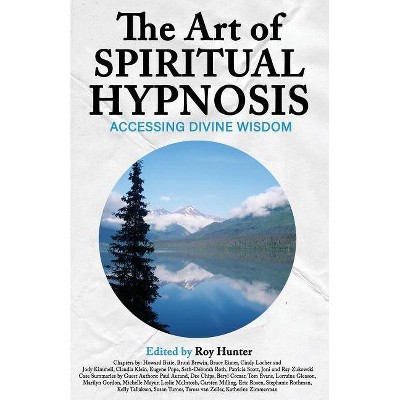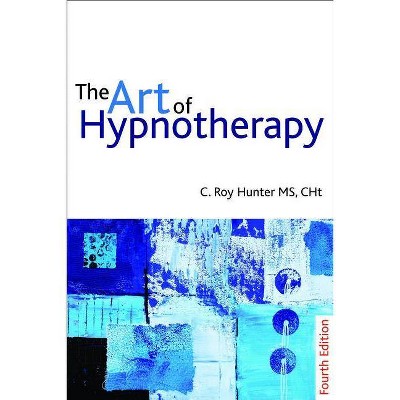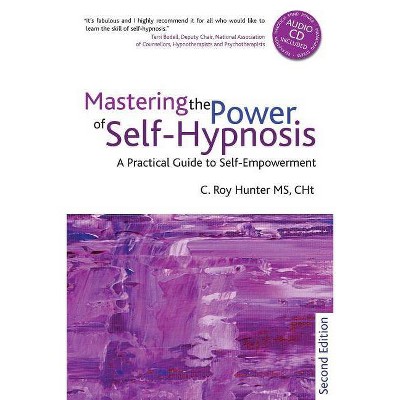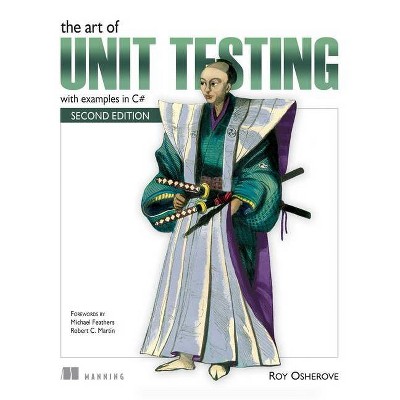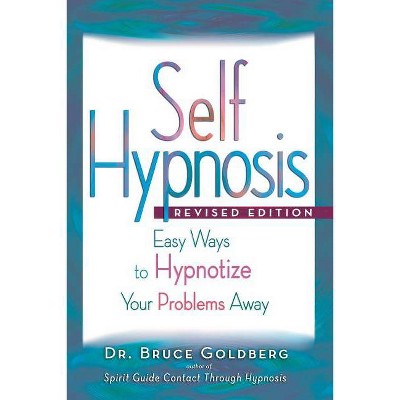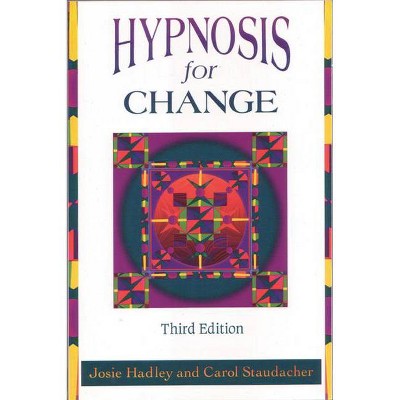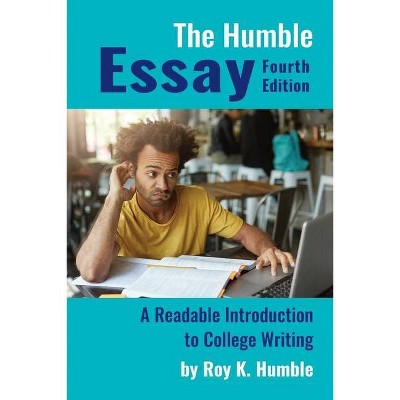The Art of Hypnosis - 3rd Edition by C Roy Hunter (Paperback)
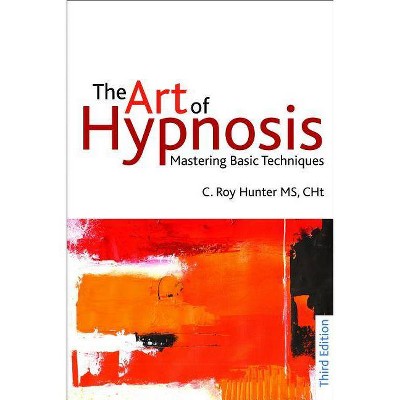
Similar Products
Products of same category from the store
AllProduct info
<p/><br></br><p><b> About the Book </b></p></br></br>This updated third edition includes a new introduction by Conrad Adams PhD together with a revised Chapter 1. Roy Hunter is an expert in the field of hypnosis. He was specially selected to carry on the work of the 'Grand Master of Hypnotherapy', the late Charles Tebbetts, who was a master teacher of the art/ science of hypnosis and h<p/><br></br><p><b> Book Synopsis </b></p></br></br></p>This book is based upon the training courses of Tebbetts, which has been updated by Roy Hunter. Tebbetts' training has formed the basis of a large number of hypnotherapy courses taught both in America and Europe. The Art of Hypnosis is well-written and easy to read and understand, even for the novice. In-depth and practical information is given on how to achieve maximum results in a hypnotic session by phrasing suggestions properly andby using various techniques to determine which approach is best for each individual client.<p/><br></br><p><b> Review Quotes </b></p></br></br><br><p><i>The </i><i>Art of Hypnosis</i> is easy to read and understandable a and is suitable for therapists of all levels, from beginner to seasoned professional. The introduction to and overview of the techniques used by Charles Tebbetts, and adopted by Roy Hunter, equips the reader with knowledge and with techniques to practise as part of their journey in learning to master therapy skills. I found the book a refresher and more on the skills I learnt when I became a therapist, and I would recommend the book to all therapists.</p><p>Brian Manship, Brian Manship Hypnotherapy</p><br><br><p>`Few books on the subject of hypnosis cover such a wide spectrum of topics on the fundamentals of hypnotherapy. It is informative, enlightening, practical and constructive. Every hypnotherapist`s personal library should include a copy.`</p><p>Conrad Adams, PhD Founder & Academic Dean, Alpha University</p><br><br><p>Roy Hunter is well-known in hypnotherapy circles. He is a widely-read author and sought-after speaker who diligently continues the work and teaching of the late Charles Tebbetts, considered by many to be a grand master of hypnotherapy. Hunter is also a practicing hypnotherapist who, since 1987, has taught Diversified Client-Centered Hypnosis at Tacoma Community College in Washington. His books are required reading at schools of hypnosis around the world. He was inducted into the International Hypnosis Hall of Fame in 2000 and has received honors from national and international hypnotherapy organizations. With Crown House Publishing, he has recently released new editions of The Art of Hypnosis, The Art of Hypnotherapy, and Mastering the Power of Self-Hypnosis. Together, these three volumes form a comprehensive home-study course on hypnosis for both professional hypnotherapists and lay readers. <i>The Art of Hypnosis (Third Ed.)</i> begins with a scholarly history of hypnosis - one of the best I've read. It's an excellent manual on basic skills and concepts, covering tests of hypnotizability, trance induction, deepening, measures of trance depth, awakening, the formulation of suggestions, self-hypnosis, and the subconscious. Many of the scripts and examples are verbatim from Tebbetts. Hunter also draws material from other legendary figures such as Milton Erickson, Ernest Rossi, Dave Elman, and Walter Sichort. Although I'm a hypnotherapist with over two decades of experience, I, nevertheless found several gems. Hunter, for instance, gives eight arules of the minda that explain the cognitive origins of unwanted behaviors and psychosomatic symptoms. The book also provides six inductions, with precise instructions. Hunter places a strong emphasis on training for professional hypnotherapists (he recommends much more than a single weekend course or a book), ethics, supervised practice, competence, understanding each client, and working cooperatively with the medical community. He teaches readers and students not only the techniques of hypnosis, but how to perform those techniques with empathy, intuition, and sensitivity to client needs.</p><p>Judith E. Pearson, Ph.D</p><br><br><p>Themes of Hunter''s readable overview of hypnosis basics include: definition, purposes, history; the B. I. C. E. hypnotic formula, suggestion and suggestibility tests, inductions, exits, and depth; ethics, meeting client needs, the danger question; intentional self-hypnosis, hypnotherapy, and Charles Tebbetts''s view of the subconscious.<br /><br /> The book starts with the statement (1) by the author''s mentor, Charles Tebbetts, that all hypnosis is self-hypnosis. Thus, the naAAve subject fearful of being controlled by another discovers that she is the source of that imaginative-meditative state. That one can call hypnosis other-guided focus finds support in Hunter''s statement (3) that the hypnotist practices the art of guided self-hypnosis. Guided auto-suggestion (15) and guided self-mesmerism (44) amount to the same thing; guided meditation (16) and monoideism are even closer. The other may be the practitioner who gives an imaginative road map to what the client himself, or a higher-self within according to Assagioli, creates. In any case, you hypnotize yourself. One practitioner came to a group with what he thought was a hypnotic induction record. It was yodeling. Before he could correct the error he saw many of the people were under. (Cf. Ben Franklin, p. 40) They obviously came in having chosen the hypnosis experience.<br /><br />Thus, Hunter considers hypnosis an art (16). Apparently the hypnologist tunes in to the person in an individual way based on practice experience to enable the visualizer to realize qualities of self. A therapist does no less. Advisedly he puts the word trance in quotes (16), implying a Hollywood shrouding of hypnosis (11) in mysticism. He dramatizes everyday hypnosis by saying (16) that he asks every client, When was the last time you cried real tears during a powerful movie? (I confess to the ending of Love Story and the rifle shot in Bambi.) As he says (17), <br /><br />Even thought the critical faculty can be bypassed when we get engrossed in the movie, that motion picture does not control us; it only guides us through its story. It could be said, then, that the movie is our hypnotist until the closing credits cross the screen.<br /><br />Following Hunter on self-hypnotizing I''d say it works better to say offers a scenario for choice instead of guide.<br /><br />Hunter goes on critically to relate the issue of the power of direct suggestion to permanently remove a symptom or not (55) with that of the Great Gulf (62) where many clinical psychologists and medical professionals would like to suppress and outlaw the use of hypnosis by others, going on to point out that those who practice only hypnotherapy have far more experience than other professionals who only use hypnosis occasionally.<br /><br />Hunter devotes the middle third of the manual to important issues of technique including precise language and unanticipated problems, mechanicalness versus intuitive art in script construction, awakening, testing depth of hypnotic state, direct versus indirect suggestion, and the like.<br /><br />The reader may find it odd since all hypnosis is self-hypnosis that Hunter actually has a chapter on actually doing it for yourself. Yet the untrained person would not intuitively know how to do it.<br /><br />He includes a chapter on ethics including the important question of hypnotic seal where a person not dedicated to client-centered choice tries to lock out any other hypnologist from working with a client. Since he often finds this among professionals with advanced degrees who are nevertheless undertrained in hypnosis or controlling, this chapter continues his highlighting of the irrelevance of advance degrees.<br /><br />The issue resolves itself in a call for sensitivity to the needs of the client and for positive cooperation among all persons who use the modality.<br /><br />The author concludes the book with a presentation of Charles Tebbetts''s view of the subconscious and a distinction between hypnosis and hypnotherapy, including the inadvisability, for example, of doing away with headache pain since sometimes that is a symptomatic clue of a medical issue that another professional must address.<br /><br />Hunter obviously writes from a background of great experience, as when he reports faux pas, some grave, he and others have committed on the way to perfecting the art.<br /><br />The writing couldn''t be more clear directed as it is to a basically educated audience. I''d guess that audience represents three groups: the general reader who simply would like demystify hypnosis, perhaps considering having the experience; a smaller group of professionals who will compare notes with Hunter and pick up useful tidbits in the process; a minute portion positively considering undergoing training or, against Hunter''s advice, practicing hypnosis from a book.<br /><br />A reviewer can''t have much to complain about in the writing. Only two flies show up in the ointment: Latin usage and a misconstrued plural. In the latter case a phenomena (53) is as unworkable as a apples. In the former, Albertus Magnum (instead of Magnus) means Albert the great thing. De Planetarum Influxu (Mesmer''s doctoral thesis, 37) simply translates as the influence of the planets rather than the strange Planetorium Influx. Quibbles to be sure. Further, every hypnologist makes her choice of terminology, and trance, that mere passing over between what we call the conscious state and that meditative focus we call hypnosis, strikes me as unduly mystifying. Indeed, in the text Hunter repeatedly underscores that in this meditative state a person is certainly more attentive than in the distractedly fuzzy state of daily mind-wandering awareness and often acts in his own interest, as by walking out.<br /><br />Hunter nicely gathers together on one page all the works he generously refers to in the text, their merits specified, as further aids to the reader. Although the index summarizes the topics, the glossary may miss a term or two, as the very important issue of hypnotic seal he could profitably have reemphasized.<br /><br />The Art of Hypnosis</em> effectively presents a wise, experienced, clear explanation of hypnosis, including pitfalls to avoid, anyone can understand. Thus, this reviewer recommends it highly indeed.</p><p>Anthony P. Bober</p><br>
Price History
Price Archive shows prices from various stores, lets you see history and find the cheapest. There is no actual sale on the website. For all support, inquiry and suggestion messagescommunication@pricearchive.us
